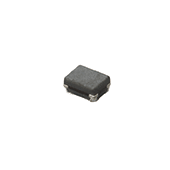source: Murata news
Murata Manufacturing Co., Ltd. has introduced the NFP0QHB series common mode noise filter for high speed differential interface “USB 3.0/3.1.” This product started mass production in August 2017.
USB is used as an interface between internal and external components with mobile devices. There is an increasing need to transfer high resolution video and streaming data from mobile devices to PCs and televisions, and so adoption of USB 3.0 (5Gbps) and 3.1 (10Gbps) is advancing as a high speed differential interface for mobile devices.
A product with high cut-off frequency (fc) is needed for a common mode noise filter as a noise suppression measure for USB 3.0/3.1, and at this time Murata is introducing the NFP0QHB242/372/542HS2 in the 025020 inch size with suitable cut-off frequency of 8.5GHz or greater.































